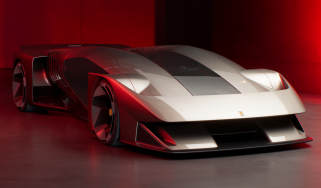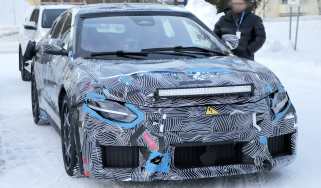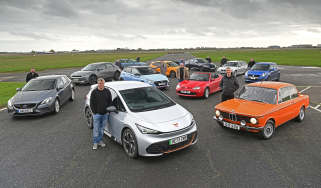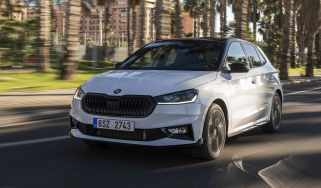Ferrari electric car plans progress with high-tech new factory
Ferrari is well on the road to its first electric car in 2025 but carbon-neutral fuels will keep internal combustion on the agenda.
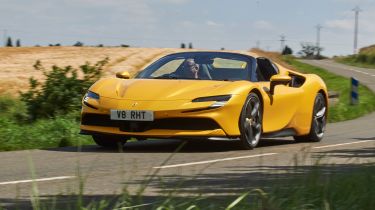
Ferrari has officially opened the new €200m plant that will build its first all-electric car in 18 months time. The new EV will be unveiled late next year ahead of production kicking off at the beginning of 2026 in the new e-building at Ferrari’s Maranello headquarters.
The Italian supercar manufacturer is yet to reveal much beyond cryptic hints about the car, which will be built alongside the 12-cylinder Purosangue and plug-in hybrid SF90.
“It’s going to be a Ferrari, and we can say one thing - it will have four wheels,” was the extent of Ferrari CEO Benedetto Vigna’s initial declaration at the factory’s opening ceremony, although he went on to give a few more hints, if nothing on the bodystyle, performance or pricing.
Ferrari is working on its own powertrain rather than buying in the technology, with the exception of the battery cells, which can be tweaked and adapted as tech develops.
“People buy a Ferrari because when they get in a Ferrari they have a lot of fun, so when we do an EV, we have to do it in the right way,” he said.
Vigna also maintained there is no customer resistance to Ferrari going electric, with buyers expecting the brand to develop new powertrains. “If demand was only for ICE, we wouldn’t sell a hybrid,” he said. “We have people asking when they can order an EV, and people saying they won’t become a Ferrari fanista until we have an EV. Some people say they won’t buy an EV, others say they only want to buy an EV, and people say they won’t only buy an EV. There are all kinds of people, and it is not a battle between them.”
Carbon-neutral fuels for petrol cars
But the move to electric won’t come at the expense of existing internal combustion engine and hybrid powertrains. “In the long run we would still make ICE cars even without carbon neutral fuel, but I think it will become more and more of a reality,” commented Vigna. “We’re working with a partner for carbon neutral fuel for F1, and usually the tech from there comes to the road; we believe that ICE cars still have a runway and this will be supported by developing fuels - the cut-off is 2036 but many things could change. The key thing is flexibility and being able to react to changes in the landscape.”
Vigna also spoke out against Ferrari becoming complacent in developing new powertrains. “We need to understand that what is true today isn’t true tomorrow, and having a sports team in the company is very useful because you can win one week and the next week you can lose - you can’t relax, you can’t be lazy,” he said. “Some companies didn’t understand what is going on - for example Motorola, Kodak, Sony Ericsson. When people are fat they do not feel the need to work with the same level of hunger.”
Without specifically speaking about the threat from Chinese brands and potential tariffs for importing cars into Europe, Vigna concluded by saying “Europe needs to wake up; if someone is running faster than us, we need to run faster than them, If a car is going faster than us, our founder Enzo Ferrari wanted to run faster than them, not put needles on the track so they don’t finish.”
Electric Ferrari car production plans
The new factory will initially iron out bugs in the production process over the rest of this year before building Purosangue and SF90 cars - described by Ferrari as its most complicated models - through 2025 until they are joined by the new EV.
The new plant has been built on the site of old industrial units, and is additional capacity for Ferrari, which is looking to build profits through increased personalisation offerings across its cars. “Last year we were caught by surprise by carbon fibre personalisation, and we don’t want to be in that situation in the future, especially as we are adding the new dimension of electric cars,” concluded Vigna. “We push more for value than volume; we want to grow the company not chase increased volumes and can exploit different vectors such as personalisation so we need more flexibility.”
Would you buy an electric Ferrari? Let us know in the comments section below...
Find a car with the experts


